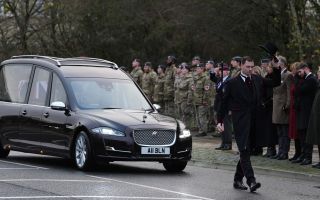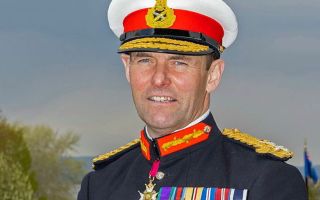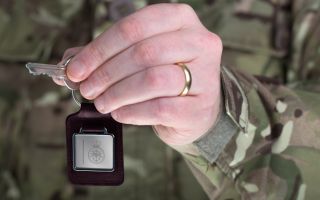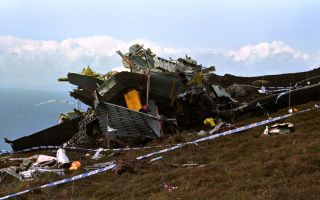British Army and RAF's new 'broadband for the battlefield' explained
The British military's new Trinity Wide Area Network (WAN) had been called 'Broadband for the battlefield'.
It will deliver a highly secure and state-of-the-art battlefield internet capability, ensuring UK forces on land can interact faster with allies, whether operating as a single nation or as part of an international coalition, across different battlefield domains.
Trinity will be able to handle 100 times more data than the current Falcon internet system, due to be retired in 2026.
- Soldiers get new tactical military communications under £89m contract to boost battlefield internet connectivity
- MOD 'committed' to delayed battlefield communications system despite warnings it is 'next procurement disaster'
- Drones alone not the future and will not replace soldiers on battlefield, defence expert says
It will vastly increase the amount of data commanders can both see and send, including far more video from aircraft and drones.
There are plans to fit Trinity nodes to the Boxer armoured vehicle, meaning the system can be sent right up to the frontline.
In effect, this new system provides a much bigger data 'pipe' that will give commanders – from battalion level and above – the ability to add, access and move much larger amounts of information than ever before.
Trinity is part of the £89m contract to enhance tactical military communications announced in August with BAE Sytems.
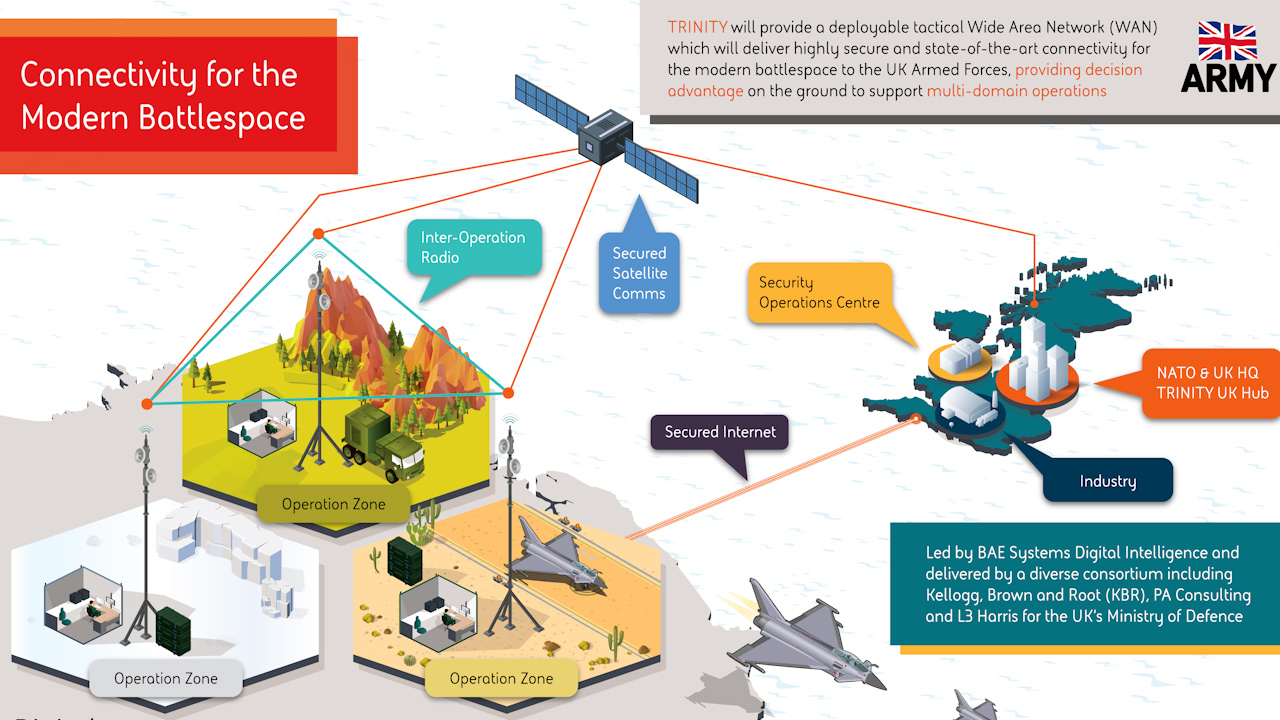
How does it work?
Trinity works by using a series of deployable nodes, similar to the mesh system many will use with their wifi at home.
Trinity's resilience is based on its composition. Its nodes are each able to add, access and move data in a secure network. The nodes are connected, creating a self-contained battlefield network.
If a number of nodes are damaged in warfare, the rest automatically re-route to maintain optimum network speed and flow of information, making it highly effective, and creating a self-contained battlefield network.
Each of those nodes is then linked to headquarters back in the UK or at Nato for, instance, by a secure satellite or internet connection.
The nodes themselves will be compact, some just suitcase-sized, allowing them to be quickly sent forward to the operational area.
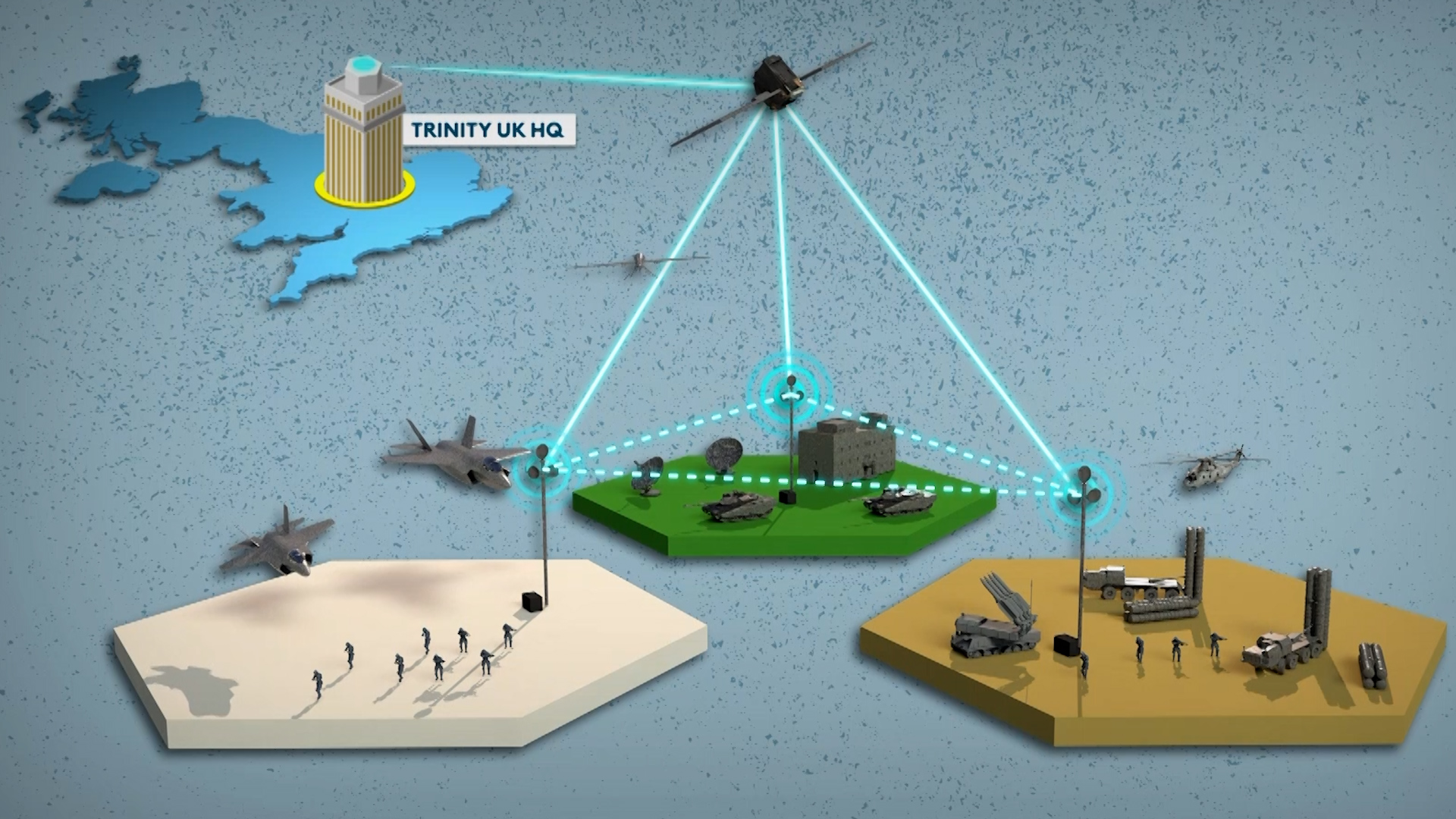
In August, David Armstrong, Group Managing Director at BAE Systems' Digital Intelligence business, said: "In an increasingly complex and fast-paced threat landscape, Trinity will empower the UK Armed Forces with a greater and more efficient view of what is happening, enabling them to make swift, informed decisions when and where it matters most.
"By providing this advantage to frontline decision-makers, Trinity reinforces our commitment to equipping the UK Armed Forces with the right tools to stay ahead in the ever-evolving battlespace."
Trinity is primarily designed for higher-level communications, to connect big headquarters together, and it will give those HQs the ability to soak up large amounts of tactical data, giving them a more detailed view of the battlefield.
The system is scheduled to come into service with the Army and RAF in late 2025.

